- About us»
- Net income calculator»
- Population aging»
-
- Least developed regions»
-
- Material need benefits
- Meal allowance
- Counties of Slovakia
- Average wage and inflation
- Living and Subsistence Minimum
- Unemployment of Czechia and Slovakia
- NACE Classification
-
- Life expectancy
- Gender differences
- Youth unemployment and NEET
- Minimum wage in EU
- Unemployment rates of different age groups
- Share of salaries on GDP
- Employment of mothers of more than 3 children
- Percentage of employees ususally working on Sunday
- Long term unemployment
- Employment rate
- NEET
- Unemployment rate
- Percentage of employees ususally working at nights
-
- Bratislava and surroundings
- Kopanice
- Danube river
- lower Vah river
- middle Vár river
- upper Nitra river
- lower Nitra river
- Mining cities
- Kysuce a Orava
- upper Vah river - Liptov
- Spiš cities
- upper Hron river
- Juhoslovenská kotlina
- Košice fold and Torysa river
- upper Zemplín
- lower Zemplín
- EU regions
- NUTS3 regions of Slovakia
- LAU1 dataset
-
- Projects and activities
- Inclusive growth»
- Good work
- Project SKRS
- Social system – reality and vision
-
- Education of unemployed
- Young unemployed not taking part in education
- Proposal to change the system of education funding
- Library
- News»
- Contact
Switzerland – CH
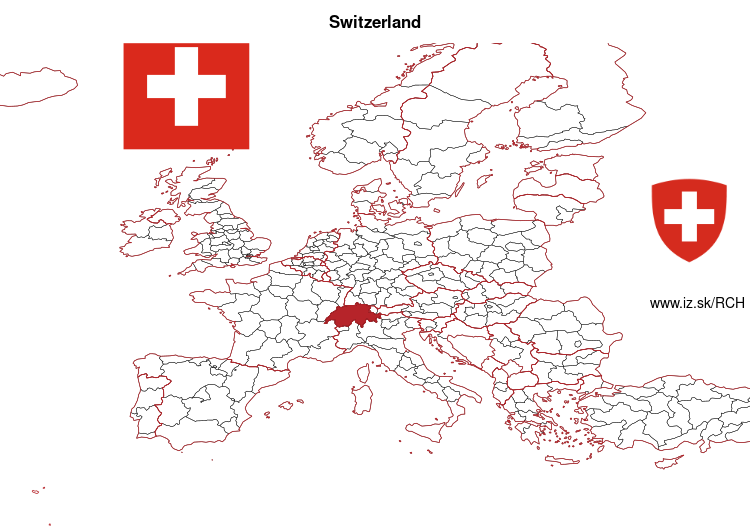
More on wikipedia wikidata Q39 on OpenStreetMap Switzerland slovensky: CH
Subregions: SCHWEIZ/SUISSE/SVIZZERA, Lake Geneva region, Espace Mittelland, Northwestern Switzerland, Canton of Zürich, Eastern Switzerland, Central Switzerland, Ticino
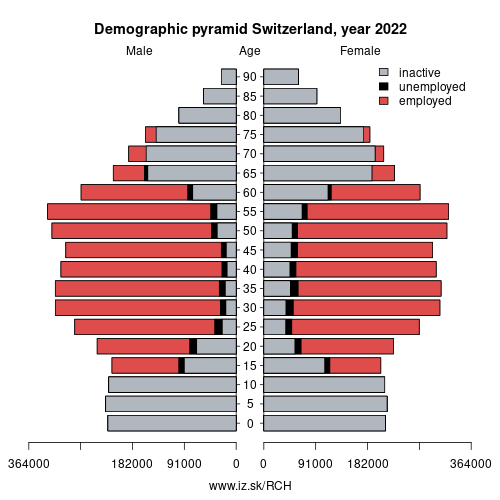
Unemployment
| Indicator | Period | Value |
|---|---|---|
| Unemployment | ||
| unemployment rate | 2023q4 | 4.1 |
| youth unemployment rate | 2023q4 | 7.4 |
| unemployment rate of low educated people | 2023q4 | 7.4 |
| Long term unemployment | ||
| long term unemployment | 2023q4 | 1.3 |
| share of long term unemployed | 2022 | 35 |
Composition of population according to age group, education and economic activity, Switzerland
| Age group | Low education | Middle education | High education |
|---|---|---|---|
| Y20-29 | P: 96.8 E: 59.7; U: 9.6; I: 27.5 | P: 569.9 E: 443.2; U: 25.6; I: 101.1 | P: 338.3 E: 286.6; U: 12.7; I: 39.0 |
| Y30-39 | P: 138.8 E: 95.4; U: 11.8; I: 31.6 | P: 444.7 E: 386.7; U: 17.2; I: 40.8 | P: 654.7 E: 597.1; U: 17.7; I: 39.9 |
| Y40-49 | P: 172.6 E: 128.7; U: 9.7; I: 34.2 | P: 457.4 E: 397.3; U: 13.2; I: 46.9 | P: 557.5 E: 504.2; U: 17.1; I: 36.2 |
| Y50-59 | P: 210.1 E: 142.2; U: 11.0; I: 56.9 | P: 585.3 E: 490.0; U: 15.6; I: 79.7 | P: 484.3 E: 435.2; U: 12.9; I: 36.2 |
| Y60-69 | P: 181.1 E: 55.0; U: 3.8; I: 122.3 | P: 494.2 E: 207.3; U: 6.3; I: 280.6 | P: 312.2 E: 170.6; U: 5.6; I: 136.0 |
Note: in thousands in 2022, according to labour force sample survey. P – total population, E – employed, U – unemployed, I – number of ecnomically inactive
Demographics
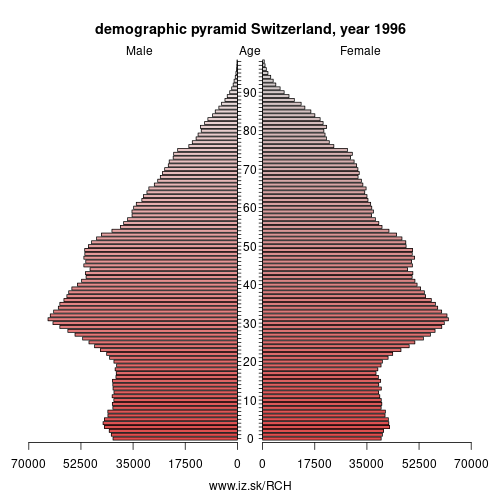
| Indicator | Period | Value |
|---|---|---|
| Demographics | ||
| number of inhabitants | 2023 | 8.815385e+06 |
| population density | 2022 | 220.2 |
| old-age dependency ratio | 2023 | 29.2 |
| Population ageing | ||
| unemployment rate – over 55 years | 2023q4 | 3.3 |
| aggregate replacement ratio | 2022 | 0.47 |
| aggregate replacement ratio – females | 2022 | 0.52 |
| life expectancy of a 50 year old | 2021 | 35.1 |
| healty life expectancy at 50 years | 2021 | 20.3 |
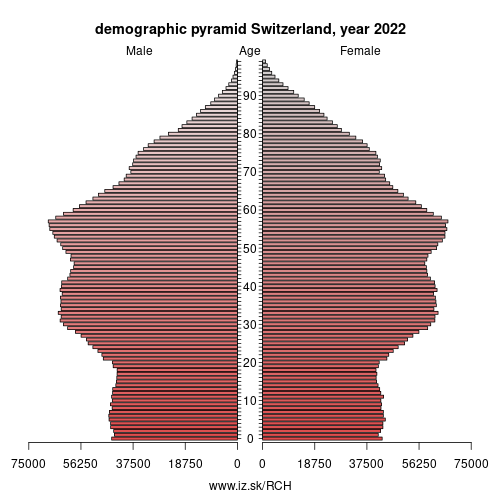
Employment by sectors, Switzerland
| NACE r2 | % | NACE r2 | % | ||
|---|---|---|---|---|---|
| A | 70.1 | 1 % | B-E | 524.2 | 11 % |
| F | 243.7 | 5 % | G-I | 763.4 | 16 % |
| J | 154.4 | 3 % | K | 202.1 | 4 % |
| L | 49.7 | 1 % | M_N | 514.4 | 11 % |
| NRP | 852.2 | 18 % | O-Q | 1105.6 | 23 % |
| R-U | 232.9 | 5 % | TOTAL | 4712.5 | 100 % |
Data for the period year 2022. Source of the data is Eurostat, table [lfst_r_lfe2en2].
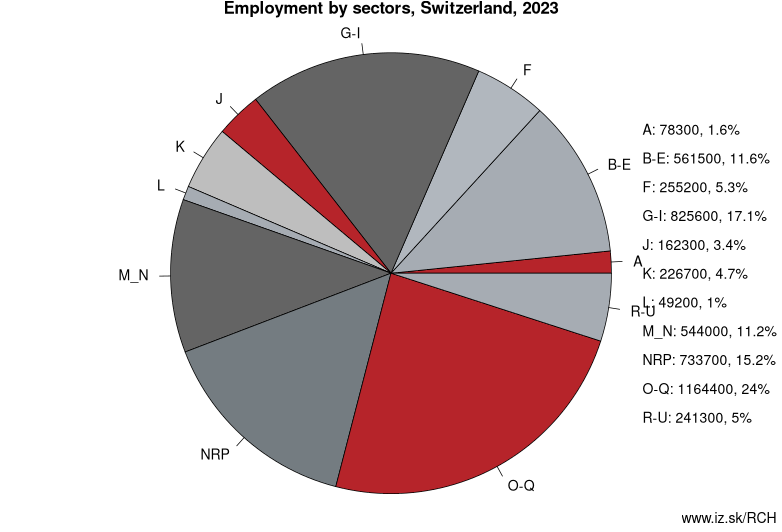
Switzerland, officially the Swiss Confederation, is a sovereign state situated in the confluence of western, central, and southern Europe. It is a federal republic composed of 26 cantons, with federal authorities seated in Bern. Switzerland is a landlocked country bordered by Italy to the south, France to the west, Germany to the north, and Austria and Liechtenstein to the east. It is geographically divided between the Alps, the Swiss Plateau and the Jura, spanning a total area of 41,285 km2 (15,940 sq mi), and land area of 39,997 km2 (15,443 sq mi). While the Alps occupy the greater part of the territory, the Swiss population of approximately 8.5 million is concentrated mostly on the plateau, where the largest cities are located, among them the two global cities and economic centres of Zürich and Geneva.
The establishment of the Old Swiss Confederacy dates to the late medieval period, resulting from a series of military successes against Austria and Burgundy. Swiss independence from the Holy Roman Empire was formally recognized in the Peace of Westphalia in 1648. Since the Reformation of the 16th century, Switzerland has maintained a strong policy of armed neutrality; it has not fought an international war since 1815 and did not join the United Nations until 2002. Nevertheless, it pursues an active foreign policy and is frequently involved in peace-building processes around the world. Switzerland is the birthplace of the Red Cross, one of the world's oldest and best known humanitarian organisations, and is home to numerous international organisations, including the second largest UN office.
Other: Switzerland, Czech Republic, Cyprus
Neighbours: Liechtenstein, France, Italy, Germany, Austria
Subregions: SCHWEIZ/SUISSE/SVIZZERA, Lake Geneva region, Espace Mittelland, Northwestern Switzerland, Canton of Zürich, Eastern Switzerland, Central Switzerland, Ticino
Suggested citation: Michal Páleník: Europe and its regions in numbers - Switzerland – CH, IZ Bratislava, retrieved from: https://www.iz.sk/PCH, ISBN: 978-80-970204-9-1, DOI:10.5281/zenodo.10200164

 Share
Share Facebook
Facebook Twitter
Twitter News
News